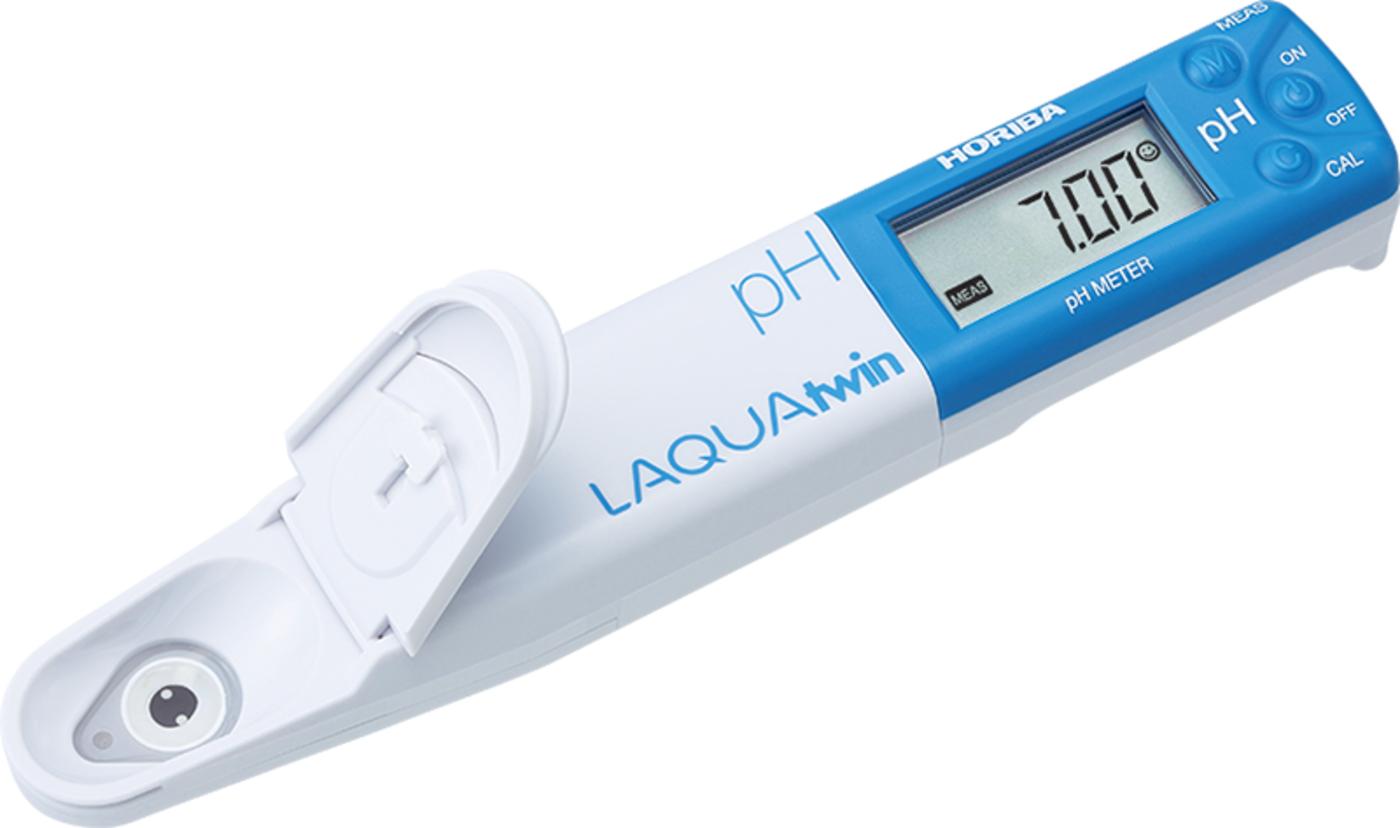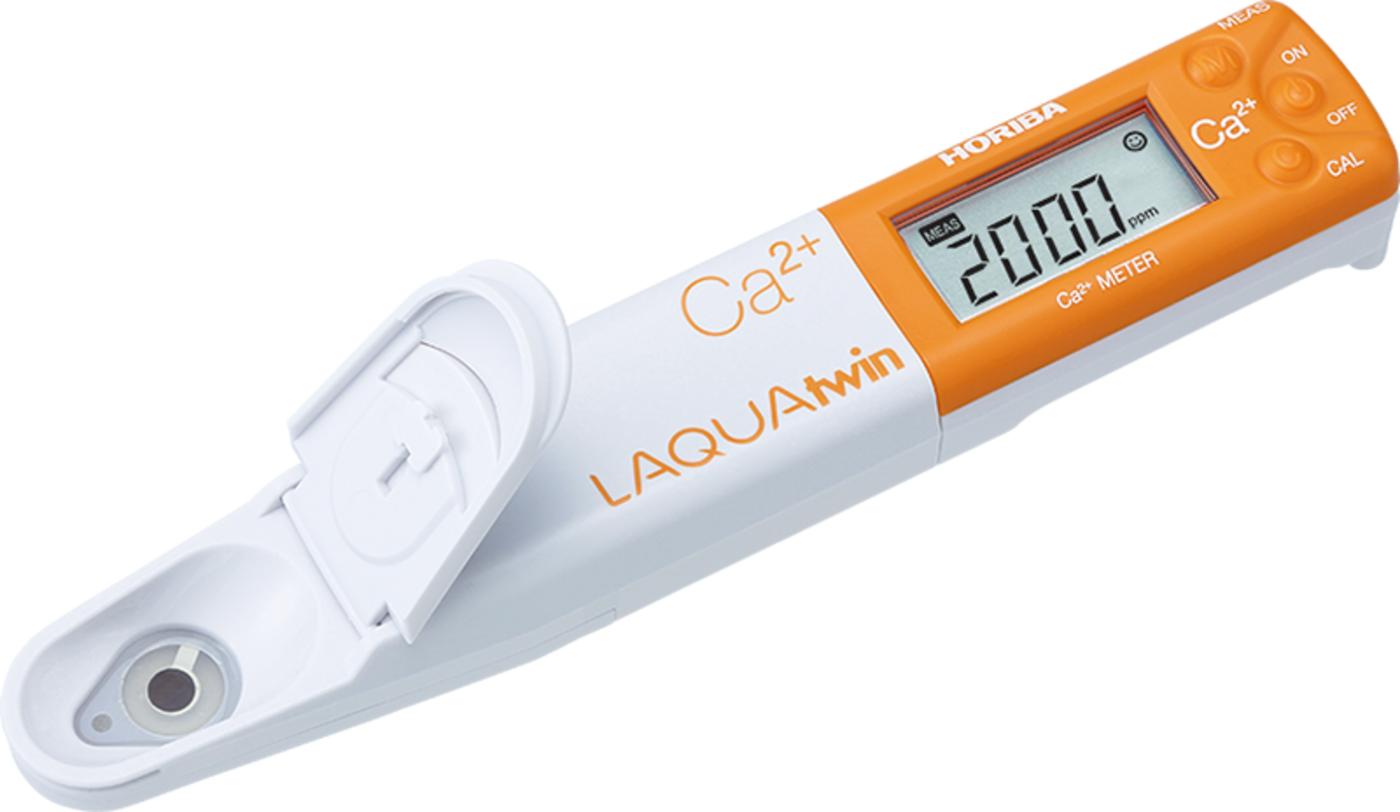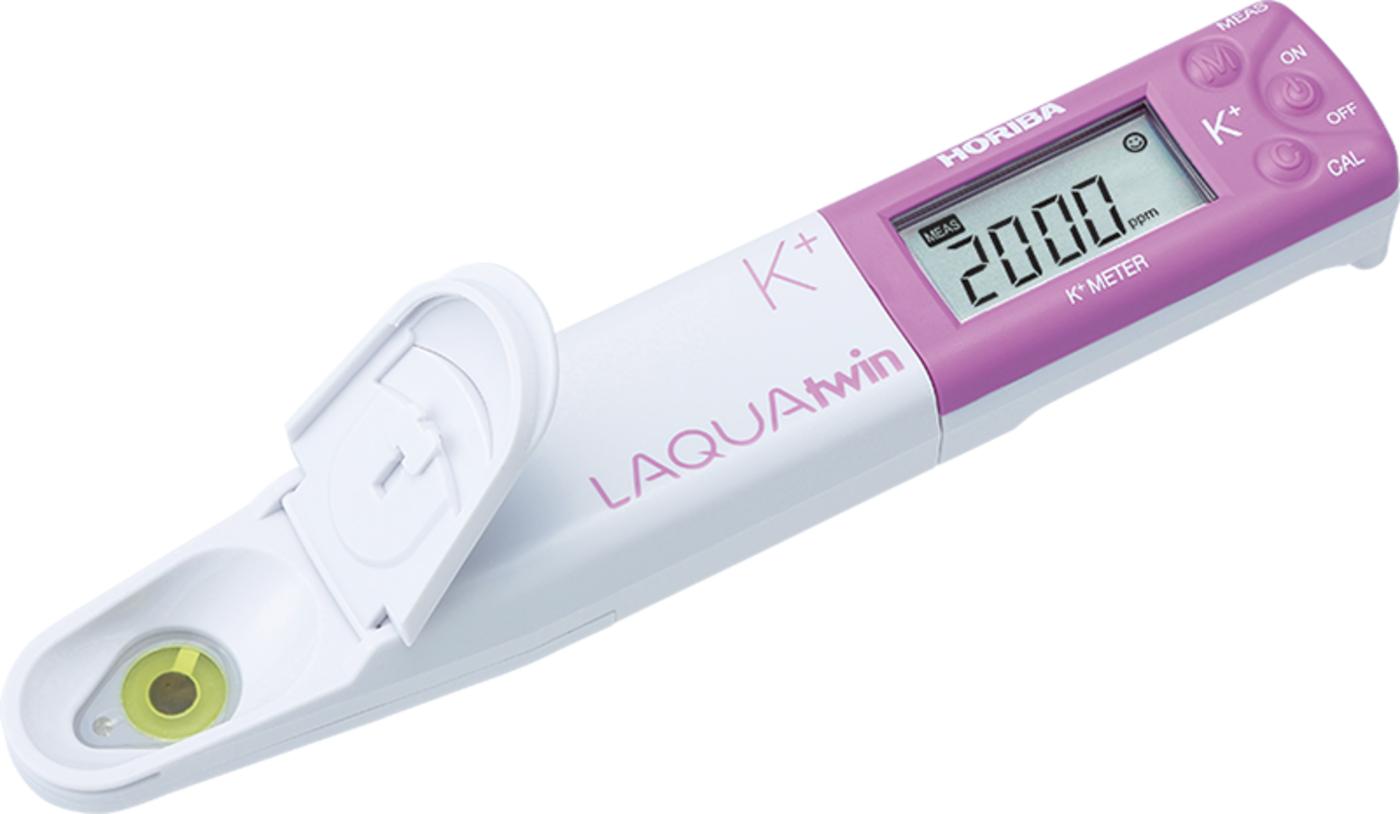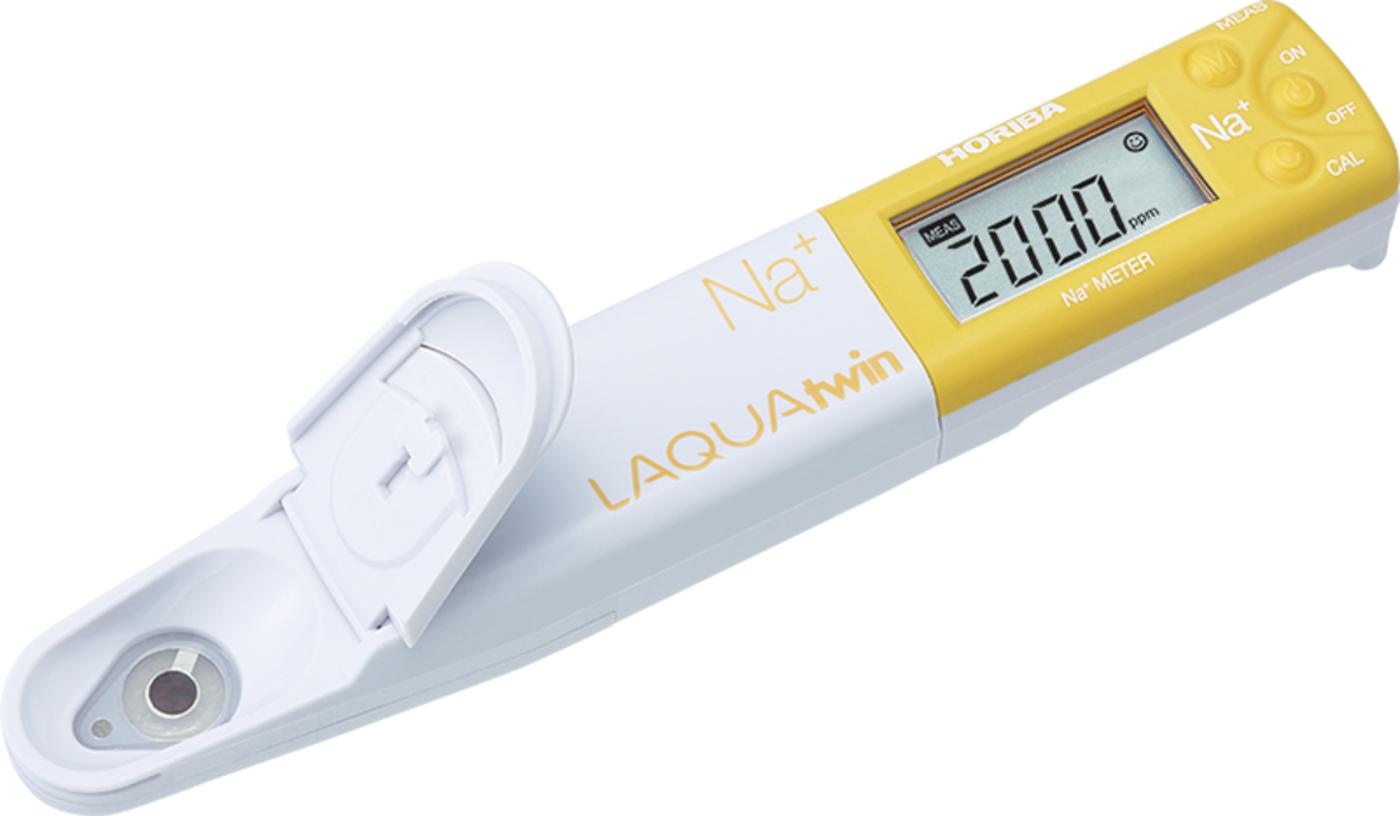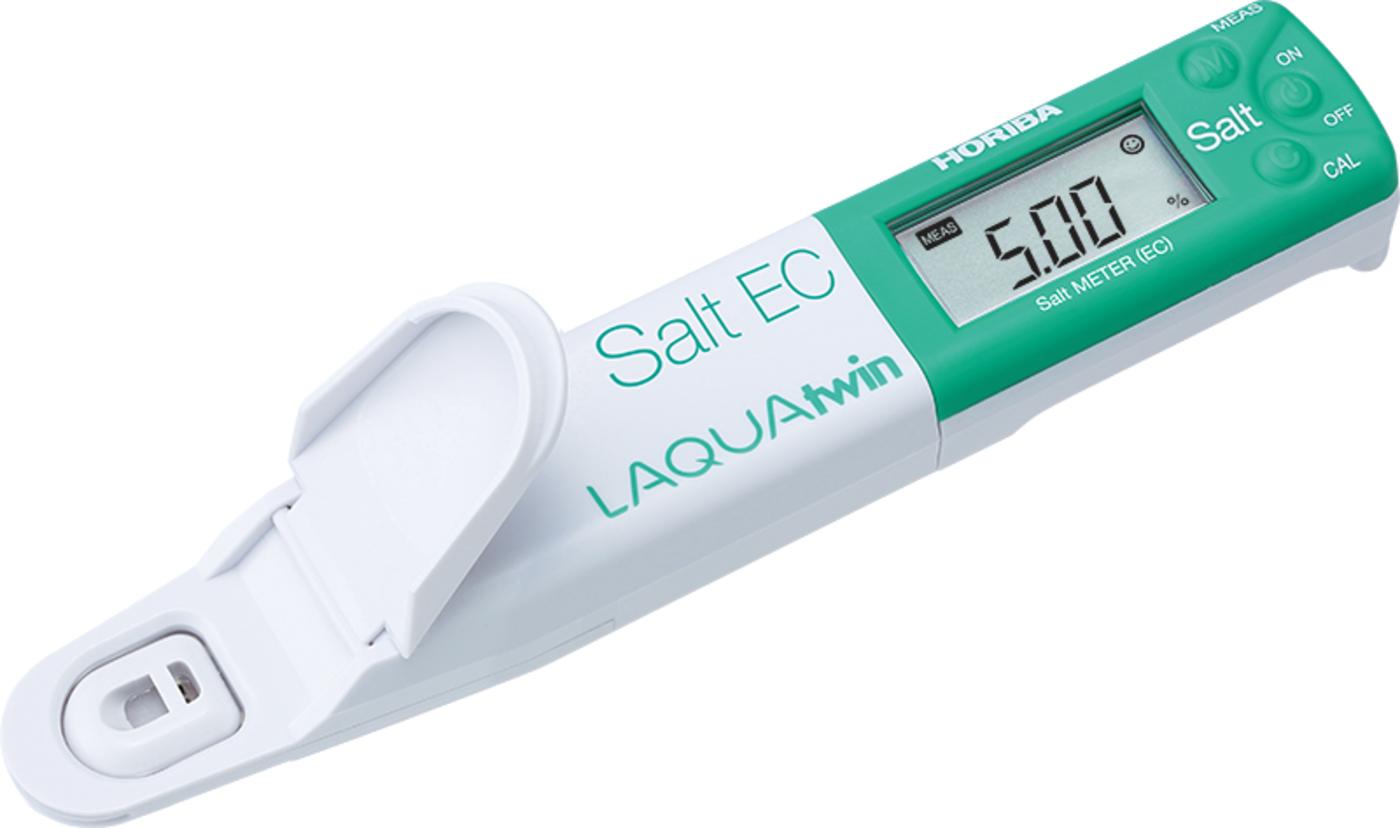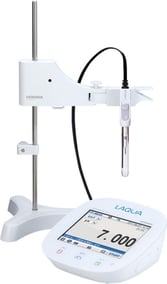Compact Pocket Water Quality Meters LAQUAtwin
Overview
pH Meter
A pH meter is an analytical instrument used to measure the acidity or alkalinity of a liquid sample, expressed as pH. pH measures the concentration of hydrogen ions (H+) in a solution, ranging from 0 to 14, with a pH of 7 considered neutral. pH meters are commonly used in various applications, such as water and wastewater treatment, food and beverage production, and clinical laboratories.
- Water Treatment: pH meters monitor the pH of water sources, such as drinking water, wastewater, or process water, ensuring that the pH is within a safe and effective range for treatment processes.
- Food and Beverage Production: pH meters measure the pH of products such as beer, wine, dairy products, and sauces to ensure consistent quality and safety.
- Clinical Laboratories: pH meters measure the pH of biological fluids, such as blood, urine, or saliva, to diagnose and monitor various medical conditions.
Conductivity Meter
A conductivity meter measures the level of conductivity in solutions. Conductivity is the ability of materials (solutions, metals, or gases) to pass an electric current. It is useful in determining the overall health of a natural water body and measuring changes in wastewater procedures at water treatment plants.
Sodium Meter
A sodium meter is an analytical instrument used to measure the concentration of sodium ions in a liquid sample. Sodium meters are commonly used in water treatment plants, food processing, and clinical laboratories to monitor sodium levels in various samples.
Salt Meter
A salt meter measures the concentration of salt in a liquid sample, often in aqueous solutions. Salt meters work by measuring the electrical conductivity of a solution, which is directly proportional to the concentration of ions in the solution, including salt ions (sodium chloride). Salt meters are commonly used in food and beverage production, water treatment, and environmental monitoring.
Potassium Meter
A potassium meter measures the concentration of potassium ions in a liquid sample. It operates on the principle of ion-selective electrode (ISE) technology. Potassium meters are commonly used in clinical laboratories to monitor potassium levels in blood and urine samples, which is crucial for diagnosing and monitoring medical conditions such as kidney disease, heart failure, or diabetes. They are also used in research, agriculture, and environmental monitoring.
Nitrate Meter
A nitrate meter measures the concentration of nitrate ions in a liquid sample. Nitrate meters are commonly used in agriculture, environmental monitoring, and water treatment to measure nitrate levels in soil, water, and wastewater. They help monitor pollution from agricultural or industrial activities and ensure compliance with environmental regulations.
Calcium Ion Meter
A calcium ion meter measures the concentration of calcium ions in a liquid sample. It operates on the principle of ion-selective electrode (ISE) technology, using a specially designed electrode that responds selectively to the presence of calcium ions in the sample. Calcium ion meters are used in various applications where calcium levels need to be monitored accurately.
Technical Data
-
BrandHoriba
-
Models AvailableSeven
-
Electrical2x CR2032
Support & FAQs
At Thermoline, we strive to supply helpful customer support to ensure that you get the most out of our products. We are committed to providing whatever support our customers need, wherever they are in the world. If you can't find your solution in the below FAQs or Knowledge Base, please contact our friendly support team.
- What are five parameters for water quality?
- Many parameters can be used to assess water quality, but here are five common ones:
- pH: This measures how acidic or basic the water is essential for aquatic organisms that are sensitive to changes in pH.
- Dissolved oxygen (DO): This measures the amount of oxygen in the water, which is important for aquatic organisms that need oxygen to survive.
- Salinity: Salinity is the measure of the amount of dissolved salts in water. It is usually expressed in parts per thousand (ppt) or percentage (%). Freshwater from rivers has a salinity value of 0.5ppt or less.
- Conductivity: Conductivity is a measure of the ability of water to pass an electrical current. Because dissolved salts and other inorganic chemicals conduct electrical current, conductivity increases as salinity increases..
- Total dissolved solids (TDS): This measures the concentration of dissolved inorganic and organic substances in the water, which can affect the taste, colour, and overall quality of the water.
- What is the sample volume of water needed when using the pocket meters?
You can get an accurate reading from a single drop of sample water in just a few seconds. Incorporating the same parts as standard laboratory electrodes, the
LAQUAtwin compact meters are built with miniaturised components and a unique flat sensor chip, which is less than 1 mm thick.- Can I test solid samples?
- Yes, you can. Foods and other solids containing some moisture can be tested by placing a small piece directly onto the sensor.
- Do you supply spares and accessories?
Yes, Thermoline can supply replacement sensors and standard solutions for all meter types.
Batteries for the pocket meters are CR2032 type and can be purchased locally.

